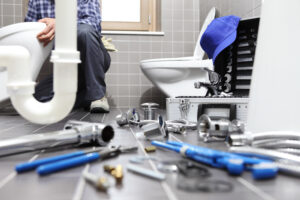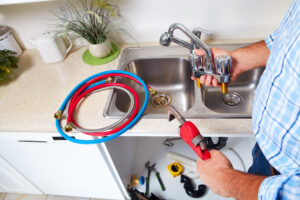When exposed to very low temperatures, water turns from liquid to solid, leading to expansion.
In such a case, it places so much stress on the pipes, leading them to break, also known as frozen pipes.
As a homeowner in Colorado Springs, you need to understand that this is a region that occasionally experiences severe cold.
Such conditions could wreak havoc on your piping system.
Since fixing plumbing can be quite expensive, even requiring you to destroy some of your structure to fix them, it makes sense to be proactive and stop this problem way before it happens.
This article gives tips on how to go about exactly that.
Insulate
As aforementioned, the state is a zone that experiences harsh conditions during winter.

A Guide To Stop The Pipes From Freezing
One action that you can take to safeguard your pipeline from the chilly environment is to have them well-insulated. This is a very important action to take, especially for those in vulnerable places like overhead spaces, underground rooms, and foundation gaps.
One good solution that you should consider using here is foam pipe wrap. It is a budget-friendly and efficient method and all you have to do to use it is to wrap it around pipes to give them a nice protective barrier. To achieve an extra layer of warmth especially in regions prone to low temperatures, consider using a heating tape.
Seal Leaks and Cracks
As you do the insulation, don’t forget about those areas that could let in cool air into your house. Seal any visible cracks or gaps to minimize exposure.
Start this process by doing a thorough inspection of your house to look for potential entry points. Cracks in doors, windows, and foundation walls could cause cool air to seep in, placing your lines at a high risk.
Once you find areas that need sealing, be sure to use weather stripping, caulk, or insulation. By addressing these challenges, you not only offer protection but also improve your home’s energy efficiency.
Allow Taps to Drip
You might think that you are wasting water but allowing faucets to flow a little is important in helping to avoid icy channels, which could be a hundred times more expensive to fix than the cost of the extra one that will be dripping.
Allowing taps to drip during the cool months of the year means that the supply channels will be flowing, which helps relieve pressure, making it hard for it to freeze despite the low heat levels.
As you utilize this method, put more emphasis on those faucets connected to lines that go through poorly insulated areas like those in exterior walls.
Keep the Heat On
To avoid high energy bills, it could be a bit tempting to lower the thermostat. However, this should not be the case if you are looking to prevent icy piping during winter. The reasoning behind this is that the risk of developing this problem increases with every drop in the temperature.
You should aim to keep the temperature at around 55 degrees Fahrenheit even when you are not around. This is a great technique to avoid frozen plumbing and also ensure a comfortable living environment.
It might also be a good idea to get a smart thermostat to help you with regulations. This device comes in handy because it enables you to program your heating system properly, making sure that your house stays warm at all times, even during the cold days.
Drain Outdoor Sources
Since they are exposed to direct cold, outdoor sources are at a higher risk. Prior to the beginning of winter, you should take some time to disconnect and drain all outdoor hoses. You should also turn off the supply to exterior faucets and drain everything.
This is an excellent way to prevent water from lingering in the supply lines outdoors, reducing chances of freezing significantly.
There’s a lot to love about the chilly months of the year in Colorado Springs including a snowy landscape, cozy fires, and the holiday mood. However, this period of the year has its own shortcomings.
Apart from the cold being unbearable at times, the chilly conditions might cause your piping to break down. Lucky for you, this article has given several ways to deter this from happening. However, once it happens and you have no idea how to deal with frozen channels, you may want to reach out to us for assistance. We have tons of experience and can help fix this problem and get your plumbing system back up and running in no time.




